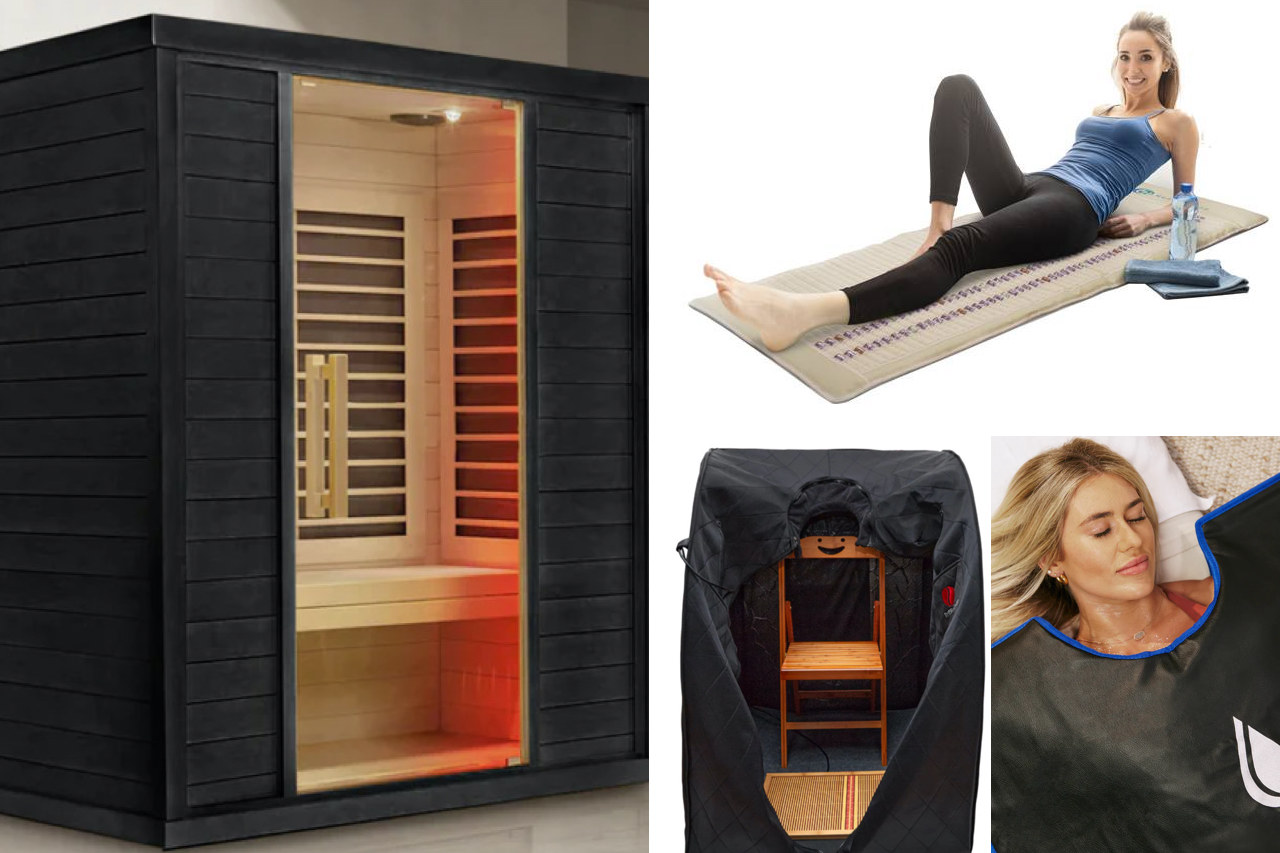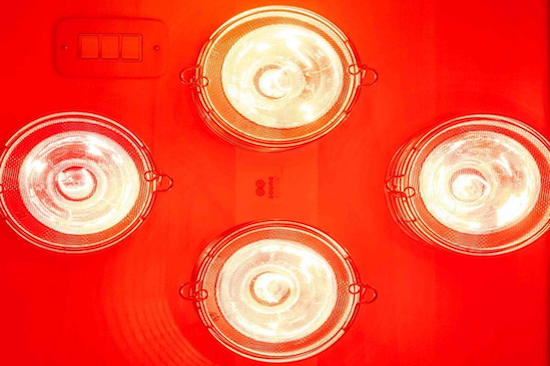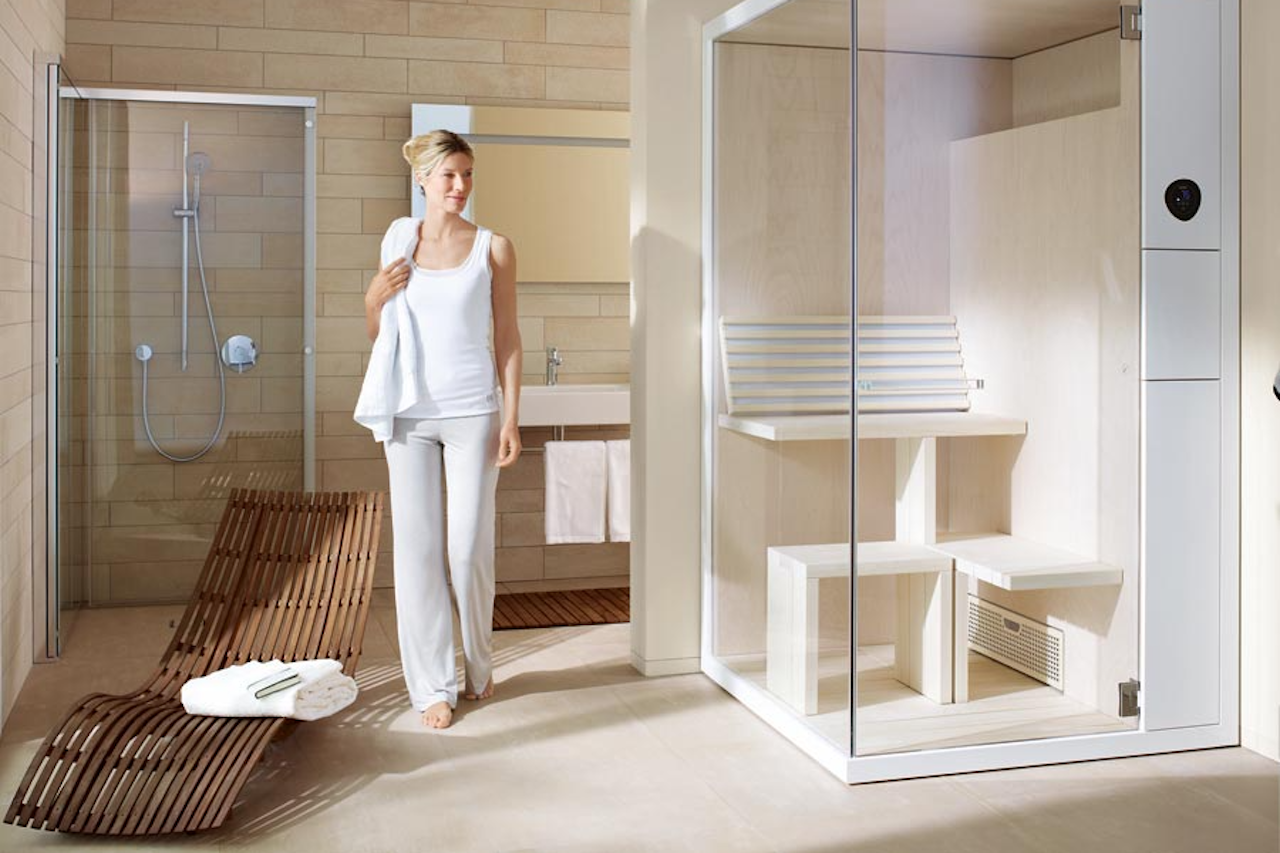- HOME
- Infrared Sauna Insights
- Near vs Far-Infrared
What Is Better: Far Infrared Or Near Infrared Sauna Therapy?
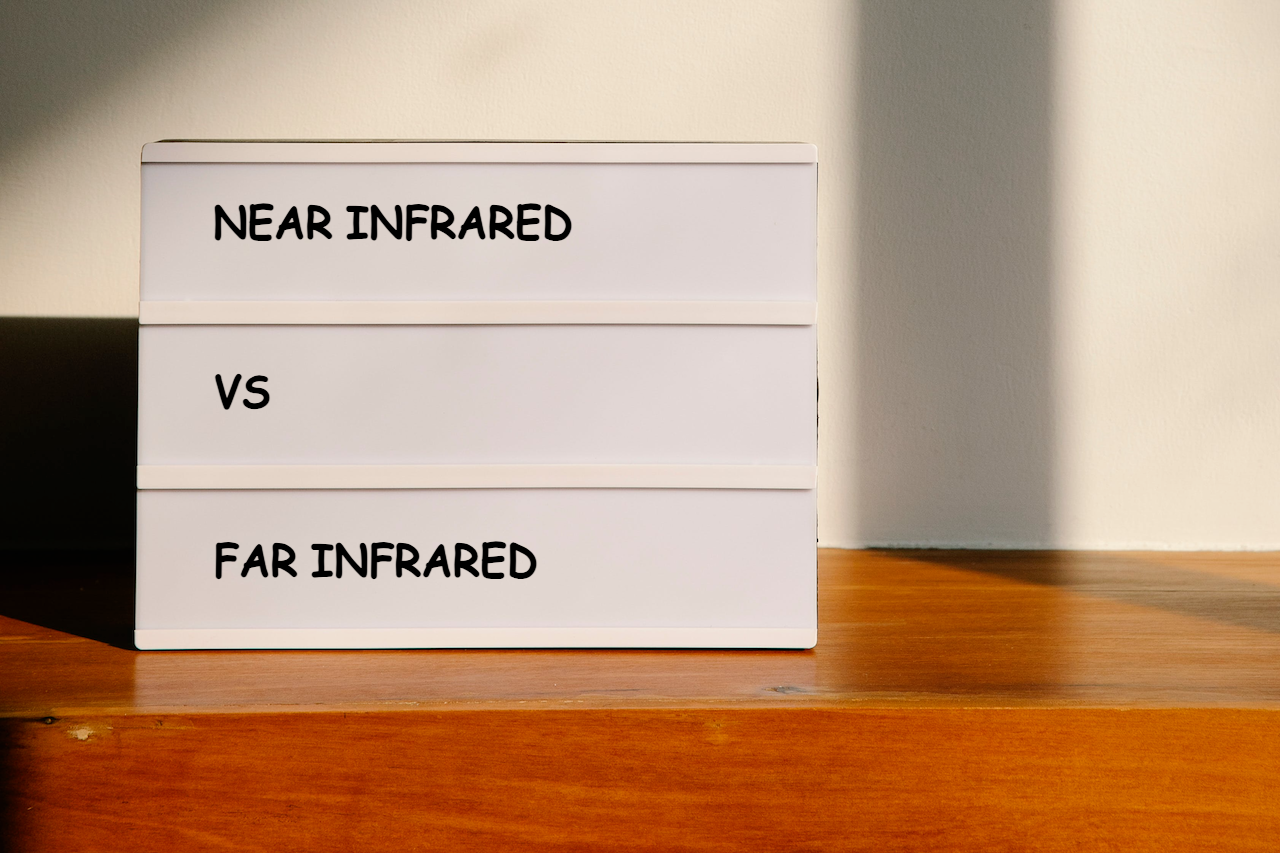
The choice for the best infrared sauna is based on several characteristics. A better question is: what do you need? We have compared the unique features of near and far infrared technology, so that you can make an informed decision about which sauna radiation will benefit you most.
| Feature | Near Infrared Sauna | Far Infrared Sauna |
|---|---|---|
| Wavelength Range | 0.7 - 1.3 microns | 3 - 12 microns |
| Frequency Range | 215 - 400 THz | 0.3 - 20 THz |
| Effect on Human Body | Penetrates skin tissue, muscle relaxation | Resonates with body's frequencies, working deeply in tissues, improving blood circulation, detox, and cellular health |
| Key Benefits | Promotes deep skin tissue healing, enhances skin health, relieves sore muscles | Promotes weight loss, relaxation, pain relief, stimulates detox by increasing metabolism and inducing deeper sweat |
| Heater Technology | Light emitting heat lamps or LED panels | Most common are carbon or ceramic heaters or a combination of both |
| Heat Experience | Mild surface warmth | Deep, gentle warmth |
| Flexibility/Design | Used in devices like lamps and panels, transforming any room to a sauna space, offering targeted therapy (portable) | Ranges from cabins to flexible options like blankets, domes, mats, and tents |

(1000 nm is 1 micronmeter)
Near and Far Waves in the Spectrum
Infrared radiation stretches from around 700 nanometers (nm) just past the visible light, to 1 millimeter. Near infrared radiation (NIR) starts from approximately 700 nanometers (nm) to 1,300 nm (0,7 - 1,3 micron). It has the longest wavelengths and produces the least heat.
Far infrared radiation (FIR) operates within a longer wavelength range of the infrared spectrum, from 3,000 nm to 1 mm (3 - 1000 micron). It comes with the shortest wavelengths, producing the most heat. In between we’ll find mid-Infrared stretching from 1,300 nm to 3,000 nm (1,3 - 3 micron). [1]
Near and Far Frequencies
The infrared wavelengths move between frequencies from approximately 400 terahertz (THz) to 300 gigahertz (GHz), sitting between the high-frequency visible light and the slower microwaves. NIR frequencies span from approximately 215 to 400 terahertz (THz), while FIR extends from 0.3 THz to 20 THz.
Significantly, the FIR frequencies, especially at the lower end of this spectrum, are closer to the natural resonant frequencies of the human body [1].
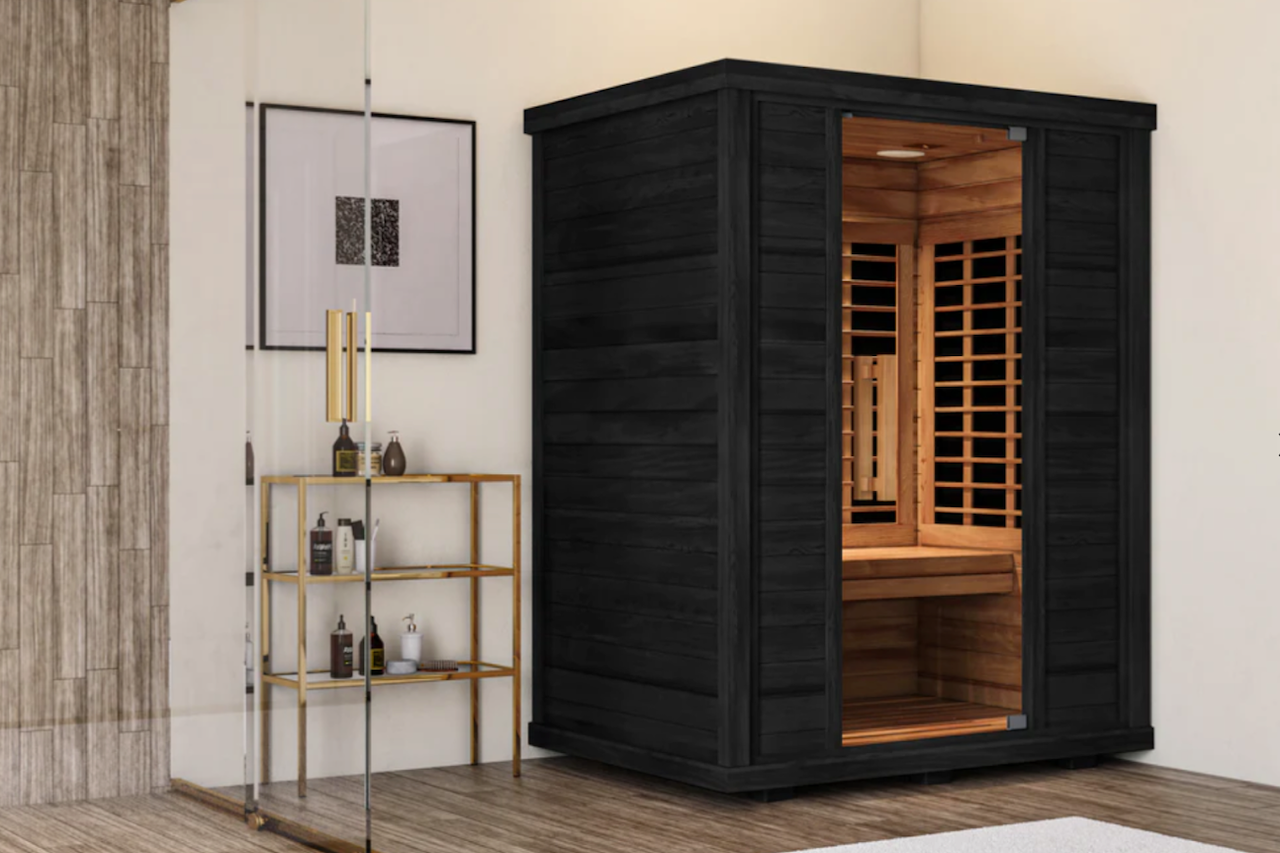
Effects of Near and Far Radiation On The Human Body
NIR light can penetrate skin tissues, reaching deep into subcutaneous layers including muscles and bones. Due to its unique wave and particle properties it causes a sort of ripple effect, like when you throw a pebble into a pond.
This penetration stimulates various responses in these tissues, leading to effects like enhanced blood circulation, muscle relaxation, and the activation of stem cells for repair and regeneration. This is different from the direct penetrative deep tissue working of FIR, and therefore has different therapeutic effects.
FIR resonates closely with the body's own biological frequencies. This allows it to work deeply in body tissues, and resonates with water molecules to improve circulation. It helps detox, and improves cellular health. FIR’s deep, gentle warmth supports overall wellness at a cellular level.
Both radiations deliver therapeutic benefits through different mechanisms. The stark contrast in NIR's capacity for deep skin penetration and FIR's ability to penetrate the human body at a cellular level highlights their distinct health benefits.
This underscores you need to make a choice based on your personal therapeutic requirements.
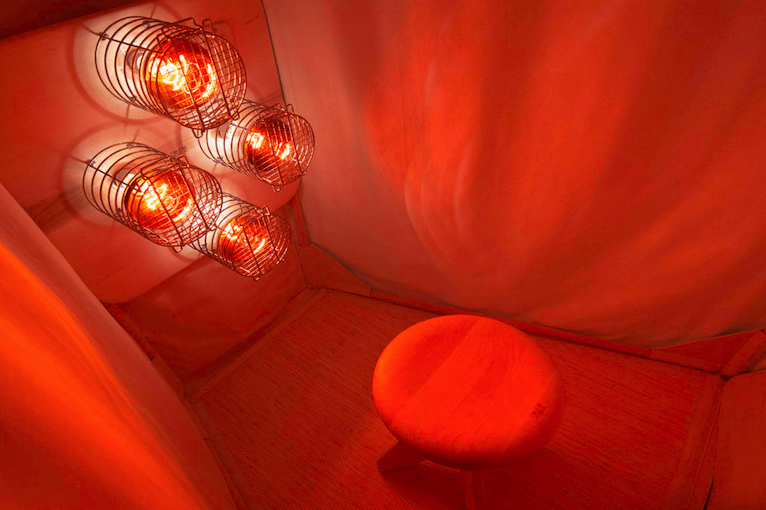
Benefits Comparison of NIR and FIR
The effects of NIR and FIR radiation on the body means their application in saunas renders unique benefits. NIR saunas promote deep skin tissue healing. By leveraging NIR light's unique penetration capabilities, they enhance skin health and relief sore muscles, tapping into the body's natural recovery processes.
On the other hand, FIR saunas promote weight loss, profound relaxation, offer pain relief, and stimulate detox by increasing metabolism and inducing deeper sweating. The choice between NIR and FIR saunas should be guided by these distinct advantages, aligning with individual health and wellness goals.
Near and Far Infrared Heater Technology
NIR sauna heaters, with light emitting heat lamps or LED panels, cater primarily to skin health with their surface-level heating. FIR sauna heaters are diverse, including energy-efficient carbon heaters for wide heat distribution and traditional ceramic heaters for rapid heating.
A combination of carbon and ceramic heaters is available too, which merges the benefits of both technologies for a well-rounded sauna experience. Click here for our article with more background information on infrared heaters.

Flexibility of Near and Far Infrared Saunas
The versatility of near and far infrared saunas is evident in their application and design.
Near Infrared is often utilized in devices like panels and lamps. This can transform any room, such as a shower, into a temporary sauna space. This flexibility enables you to enjoy near infrared sauna therapy in various settings without the need for a dedicated sauna cabin.
Far Infrared saunas, on the other hand, range from traditional cabins to more flexible options such as blankets, domes, infrared PEMF mats and tents. The portable and adaptable infrared designs offer you the convenience of far infrared sauna therapy in different environments, from personal spaces to larger areas suited for activities like yoga.
The choice between near and far infrared sauna types depends on individual preferences, available space, and desired health benefits. Near infrared devices offer targeted therapy with the convenience of portability, making them suitable if you want to treat specific areas.
Far infrared options, with their diverse formats, provide a broad range of therapeutic benefits, from detoxification to relaxation, accommodating various user needs and preferences.
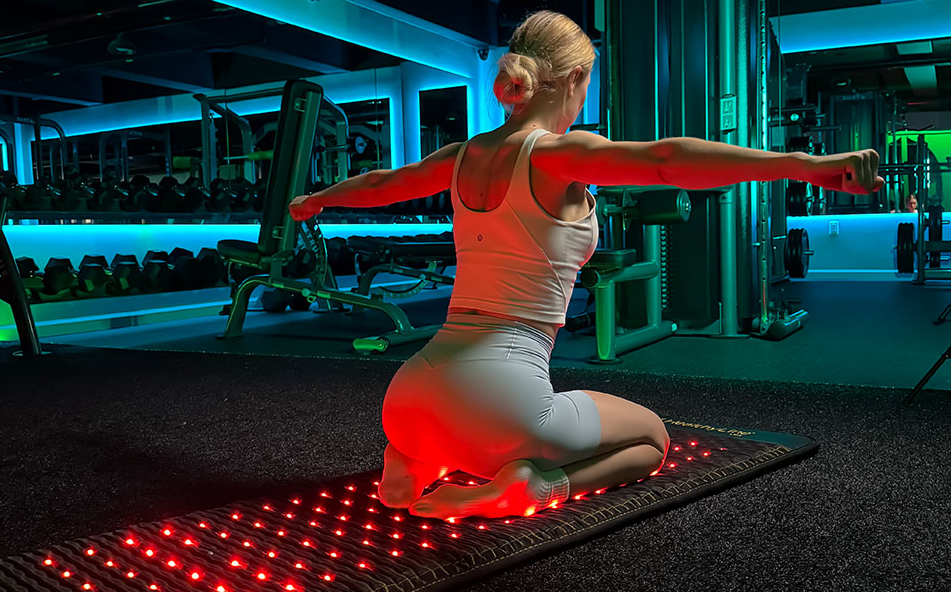
Are infrared saunas safe?
In the ongoing discussion about the safety of infrared saunas, specifically near infrared saunas, it's worth noting that the levels of NIR radiation are generally low and considered to be within safe limits. This context adds an important layer to the debate, emphasizing the need for informed research and understanding.
Our articles, such as "The Long-Term Effects of Infrared Sauna Use, What Does Research Say?,’ ‘Near Infrared Sauna - A Radiant Approach,’ and ‘Sauna Benefits for Skin Health," thoroughly explore these aspects to provide a complete picture.
Summing up, your choice between near and far infrared saunas depends on your specific needs and preferences. We've explored their unique characteristics and benefits to help you decide.
Whether you prefer the deep skin penetration of near infrared or the cellular resonance of far infrared, both offer therapeutic advantages.
If you’re torn between the allure of both the near infrared and the far infrared sauna, and can't decide which one to choose because of their unique benefits, there's a perfect solution.
The full-spectrum infrared sauna blends the advantages of both near and far infrared technologies. This type of sauna gives you the best of both worlds for your relaxation and health journey.

Sam Everhart
The following articles offer more insights to help you make the best choices for your well-being. For expert reviews on PEMF mats, sauna blankets, and more, visit our blog at saunace.com.
References
1. Jessica Scarpati, Infrared Radiation, TechTarget, https://www.techtarget.com/searchnetworking/definition/infrared-radiation
2. J M Randall et al., Resonant frequencies of standing humans, PubMed, https://pubmed.ncbi.nlm.nih.gov/9306739/
